Revisiting Existing Themes with a Fresh Perspective and Original Ideas
Associate Professor Kazuyuki Kuroyama x Lecturer Takamasa Tsukamoto
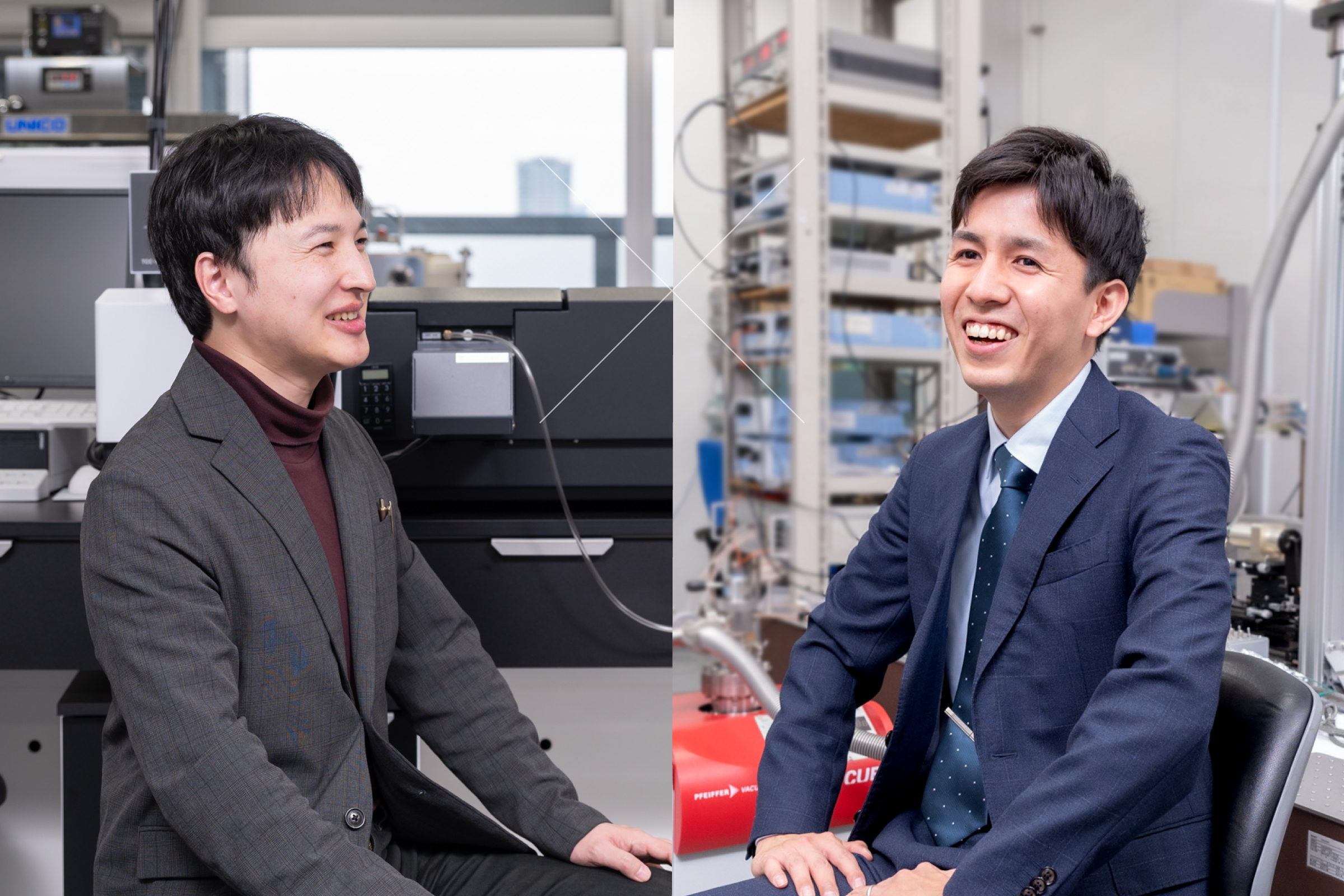
Here, we present a cross-talk between Associate Professor Kazuyuki Kuroyama and Lecturer Takamasa Tsukamoto, both of whom are from the Institute of Industrial Science, The University of Tokyo. Both researchers also work with nano-materials, but how did they feel about each other’s work upon looking into it? In this discussion, they share their candid thoughts, including about their approaches and philosophies as scientists.
Related Article> Expanding the potential of the quantum bits that underpin quantum computing (Associate Professor Kazuyuki Kuroyama)
Related Article> Unveiling the Hidden World of Nano-Materials (Lecturer Takamasa Tsukamoto)
Can Artificial Atoms Be Created in Electric Fields?
――Both of you work with nano-materials, but I imagine your approaches to research are quite different. Did you have any particular insights or realizations when hearing about each other’s work?
Tsukamoto: I found Associate Professor Kuroyama’s comments particularly intriguing when he talked about using electrodes to trap electrons. My understanding is that this involves using an electric field to create electrons (electron states) with quasi-discrete energy levels. And if you can control the number of trapped electrons, then you can artificially create something similar to an atom, right? Of course, there are significant technical challenges to overcome, so I imagine it’s not that simple in practice, but I find it fascinating that virtual atoms could theoretically be created in this way. I also felt a connection with my own research, in which I synthesize atomic clusters comprised of anywhere from several up to a few dozen atoms.
Kuroyama: Yeah, people were already talking back in the 1990s about quantum dots behaving like atoms, and this was later confirmed through experiments. Moreover, by placing multiple quantum dots next to each other, you can create quantum dots that are doubly or triply bonded. In that sense, quantum dots may share similarities with molecules and even atomic clusters. However, while I may be looking at it from a slightly different perspective, when trying to artificially create something like an atom, it is quite challenging to produce something that can be put to practical use. As an example, consider semiconductor quantum bits, which are realized using electrons trapped in a semiconductor crystal known as a “semiconductor quantum dot.” These semiconductor quantum bits only function at extremely low temperatures.
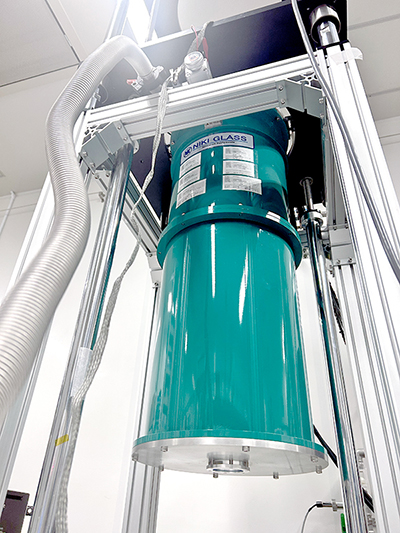
The cryostat in Kazuyuki Kuroyama laboratory. The small window at the bottom is equipped with a variety of filters that block light and room-temperature blackbody radiation while allowing terahertz-band waves to pass through. At room temperature, environmental influences blur the quantum behavior of electrons, so samples are cooled to absolute zero when conducting experiments.
Tsukamoto: Terahertz-band frequencies have a broad potential (meaning that electrons have a wide range in which they can move), and there are smaller gaps between electron energy levels (meaning that electrons can transition to the next level using only a small amount of energy), so they are highly susceptible to the effects of heat. With a narrower potential, the electrons would be less affected by heat, which could enable stability even at higher temperatures, right?
Kuroyama: Research is underway on that right now. It is becoming possible to create quantum dots that maintain their quantum properties even at relatively high temperatures by intentionally designing them to have a narrower potential width. As this technology continues to advance, I believe it will open up a wide range of possibilities, including applications in quantum computing.
Differing Approaches Between Physics and Chemistry
――What was your impression of Tsukamoto’s research?
Kuroyama: You’re creating clusters comprised of dozens of atoms inside capsule-shaped macromolecules, and I’m curious about where you got the idea to trap them in nano-sized capsules. It’s a concept that, as a physicist, I would never have thought of…
Tsukamoto: In addition to macromolecules, it is also a relatively common approach in chemistry to use various types of capsule-like materials as locations for chemical reactions—in other words, using molds to synthesize substances. In my case, I chose to use capsules because it seemed the best method if I wanted to control the number of atoms when creating clusters.
Kuroyama: I see. It’s also amazing that you can calculate the electron orbits within the complex structures of the clusters that form inside the capsule. I imagine those calculations would involve tracking the state of each individual atom and electron. In my own research, I tend to treat a larger number of
electrons as a single uniform group, so I can’t quite picture the kinds of calculations that you do.
Tsukamoto: To synthesize clusters in capsules, I actually just performed a series of unrefined experiments. (Laughs) So far, I’ve worked with around 70 different elements, and for each, I purchased reagents and patiently tested them to identify which ones worked and which ones didn’t. That’s a fine approach for basic research, but in order to further expand the scope of the study, I felt the need for a more efficient method.
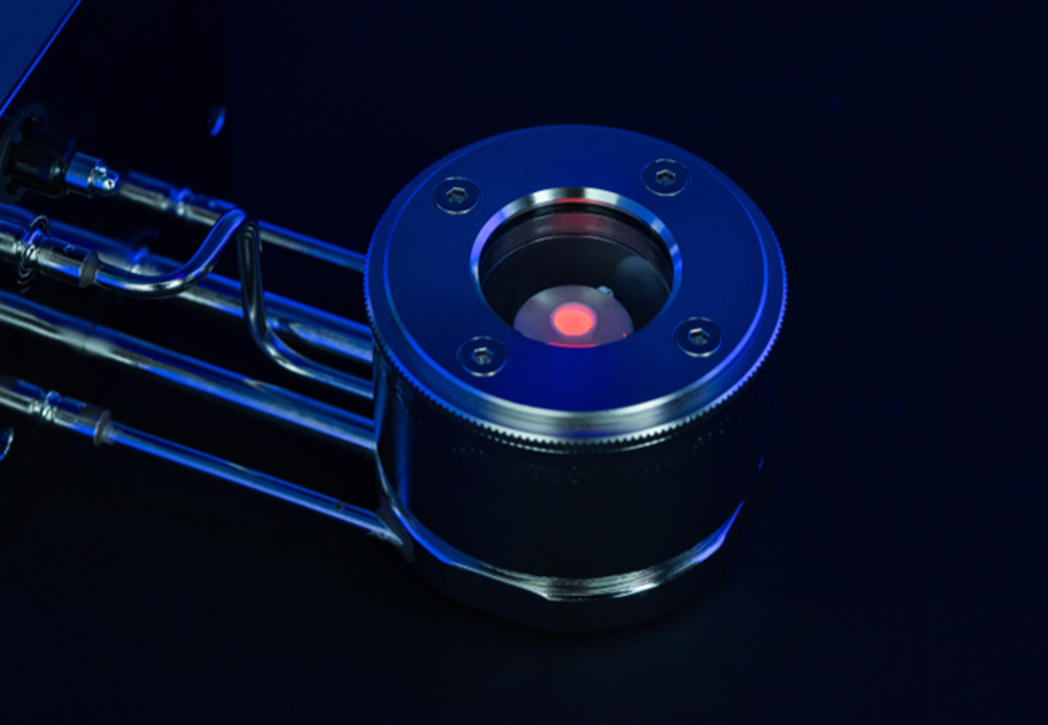
A special spectroscopic analyzer in Tsukamoto’s laboratory. Sample are placed in a container, and spectroscopic measurements of the cluster material are taken while introducing various gases and adjusting the temperature.
Credit: Takamasa Tsukamoto Laboratory
The Importance of Having a Unique Approach
――What led to you becoming a researcher? What did you think about when you were young and in school? And how did those experiences connect to your current circumstances?
Kuroyama: When I was in junior high school, I happened to pick up a science magazine. From that moment on, I became fascinated with reading about the origins of the universe, and that’s when I started thinking about becoming a physicist in the future. At university, I entered the engineering department and majored in nuclear physics. I researched quantum physics with respect to neutron spin. Around that time, I also learned about quantum information and became interested in that as well. Ordinary physical phenomena are intricate webs of numerous events and particles that influence each other, and I remember being very impressed when reading in a textbook on quantum information that if we could achieve a high-enough degree of control over these phenomena, we would be able to create physical systems describable using remarkably simple models. Of these, I felt that quantum dots represented the ultimate ideal form, as they allowed for the confinement and precise control of individual electrons. So, I feel like my current research into quantum information devices using quantum dots is a fusion of the neutron spin physics I studied as an undergraduate and my growing interest in quantum information.
Tsukamoto: Somewhat similarly, my interest in science was sparked by a special feature on TV about space that I watched as a child. However, despite my deep fascination, I wasn’t doing very well in school at the time. So, becoming a scientist—to which I thought only diligent people could aspire—seemed completely out of reach for me. On the other hand, I also loved drawing, so up until high school, I wanted to become a painter or a designer. However, my parents didn’t think I would be able to make a living as a designer. (Laughs) So, I decided to pursue science, which was my second biggest interest after art. I majored in chemistry and went as far as to earn a master’s degree, but I wasn’t able to fully complete my research project during the master’s program. That left me with some regrets, so I decided to continue on to the doctoral program—and that is how I got to where I am today. As it turns out, it is just as difficult to make a living as a scientist…
Kuroyama: It’s amazing that you went from aspiring to be a painter to becoming a researcher. I guess it’s true that you never really know where life will take you.
Tsukamoto: Yeah, even now when I’m engaged in scientific research, I often feel like my approach to research and my motivation are not at all based on a purely scientific mindset. For example, the idea of creating atomic clusters originally came from a simple, almost whimsical thought—Would gathering multiple atoms together result in one big atom? But I feel like that’s also why I was able to hit upon the idea of constructing a periodic table of nano-materials, which no one had ever thought of before. In that sense, I believe that the mindset and creativity that I developed in my youth have played key roles in shaping the uniqueness of my research.
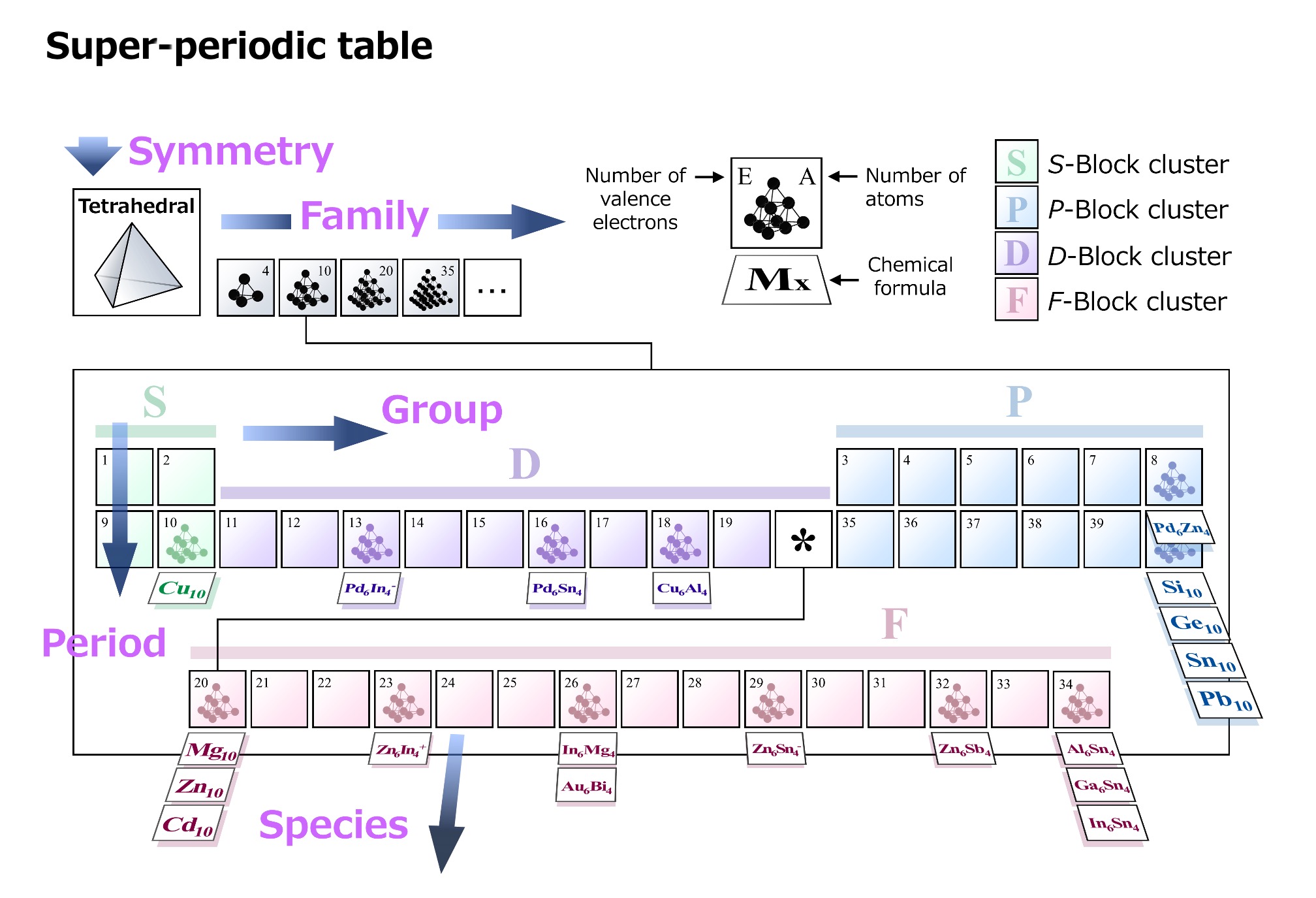
A nano-material periodic table (Super-periodic table). from 'Unveiling the Hidden World of Nano-Materials'
Kuroyama: In my case, while I’m working with quantum dots––which have been a focus of research for a long time already––I was able to identify new physical phenomena that no one knew existed by incorporating the use of a terahertz resonator. This has reinforced my belief that having a unique approach is truly valuable asset in research.
The Value of Persistence, the Advantage of Not Knowing
――Lastly, please share a message with the younger generation who are interested in research?
Kuroyama: Lately, I’ve been acutely aware of the importance of persistence. In today’s society, people want results as quickly as possible in everything they do, but in research—where we strive to make discoveries and take on new challenges—it’s not always possible to produce results in a short amount of time. You can’t just give up when things don’t go well. In a sense, your success will depend on whether or not you can stay optimistic and persist, with the hope that things will work out somehow. Most research is the steady accumulation of trial and error, so please be sure to understand the importance of this mindset.
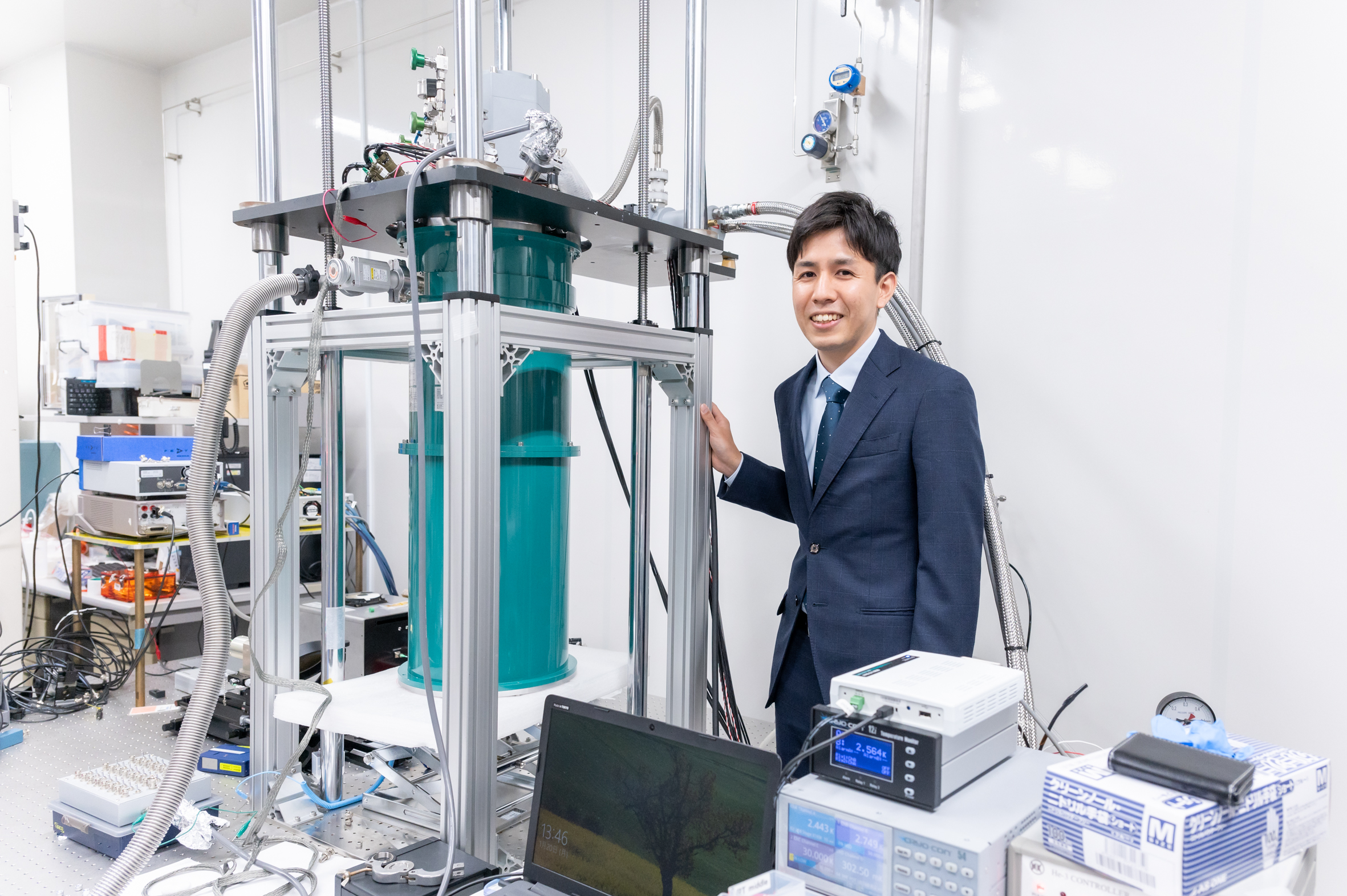
Associate Professor Kazuyuki Kuroyama
Tsukamoto: Earlier, I mentioned the importance of having a unique mindset and creativity, but as you get older and find yourself in different environments, it gradually becomes more difficult to approach research with that same mindset. In particular, once textbook knowledge and the general conventions of an academic field become deeply ingrained in your mind, it’s more difficult to think outside the box. However, there are many things that are not written in textbooks, and what is written there isn’t always necessarily correct. That’s why the more you learn about something, the more important it becomes to consciously maintain this way of thinking—this almost childlike curiosity. This mindset is invaluable in making new discoveries. As I went further in-depth in my theoretical research into atomic clusters, I came to predict the existence of super-degenerate nanomaterials which exhibit a higher degree of symmetry than spheres. At that moment, I felt for the first time as if I had reached the edge of a precipice—a critical point beyond which there was nothing in the textbooks and no one knew what lay ahead. In order to explore such unknown territory, it is crucial in research to maintain the free-thinking mindset of youth, unrestrained by conventional knowledge and environments. That’s why I encourage the younger generation to see “not knowing” as an advantage and use it as their motivation to pioneer new avenues of research.
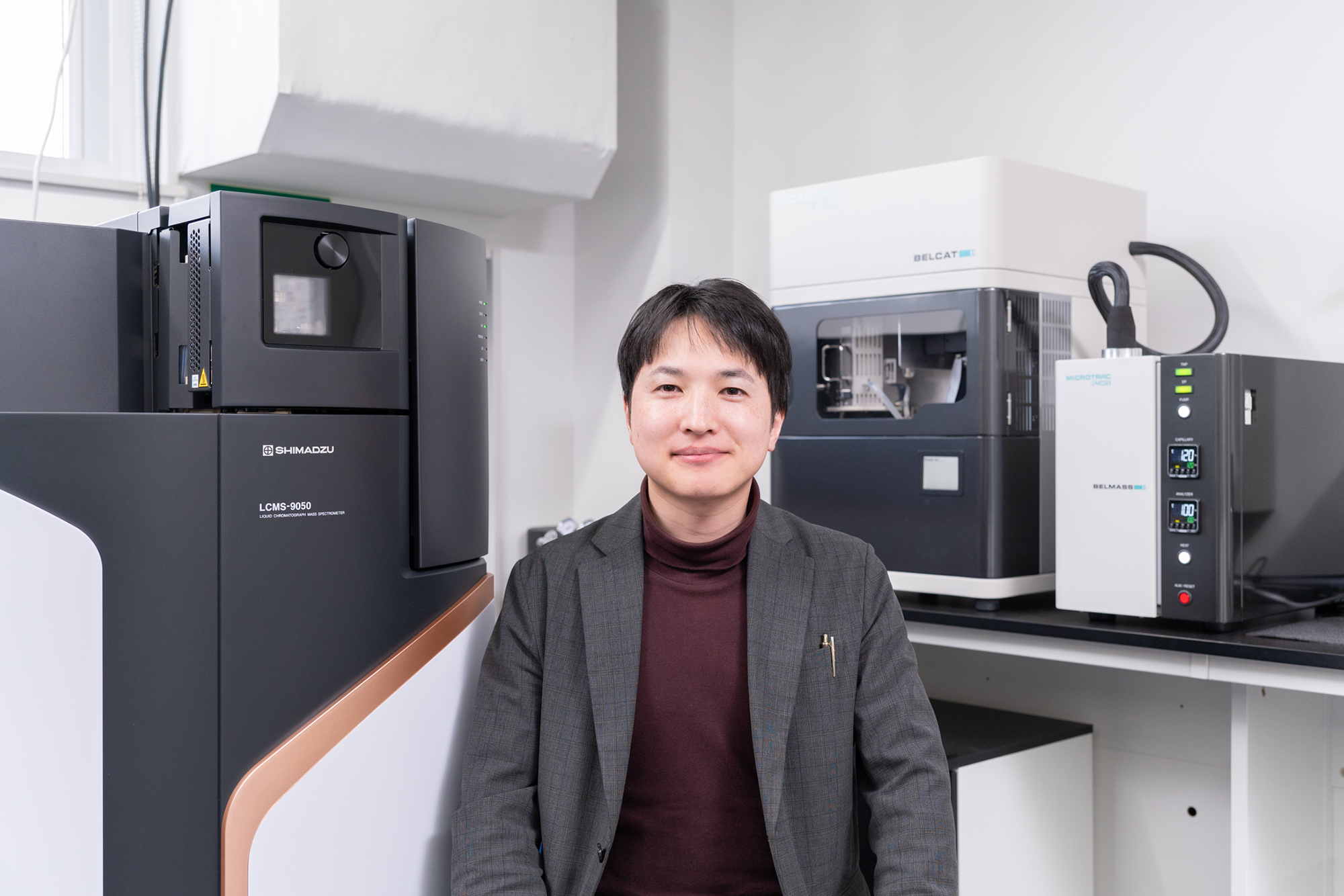
Lecturer Takamasa Tsukamoto
Laboratory website> Kazuyuki Kuroyama
Laboratory website> Takamasa Tsukamoto


Comments
No comments yet.
Join by voting
How did you feel about the "Possible Future" depicted in this article? Vote on your expectations!
Please visit the laboratory website if you would like to learn more about this article.
Share